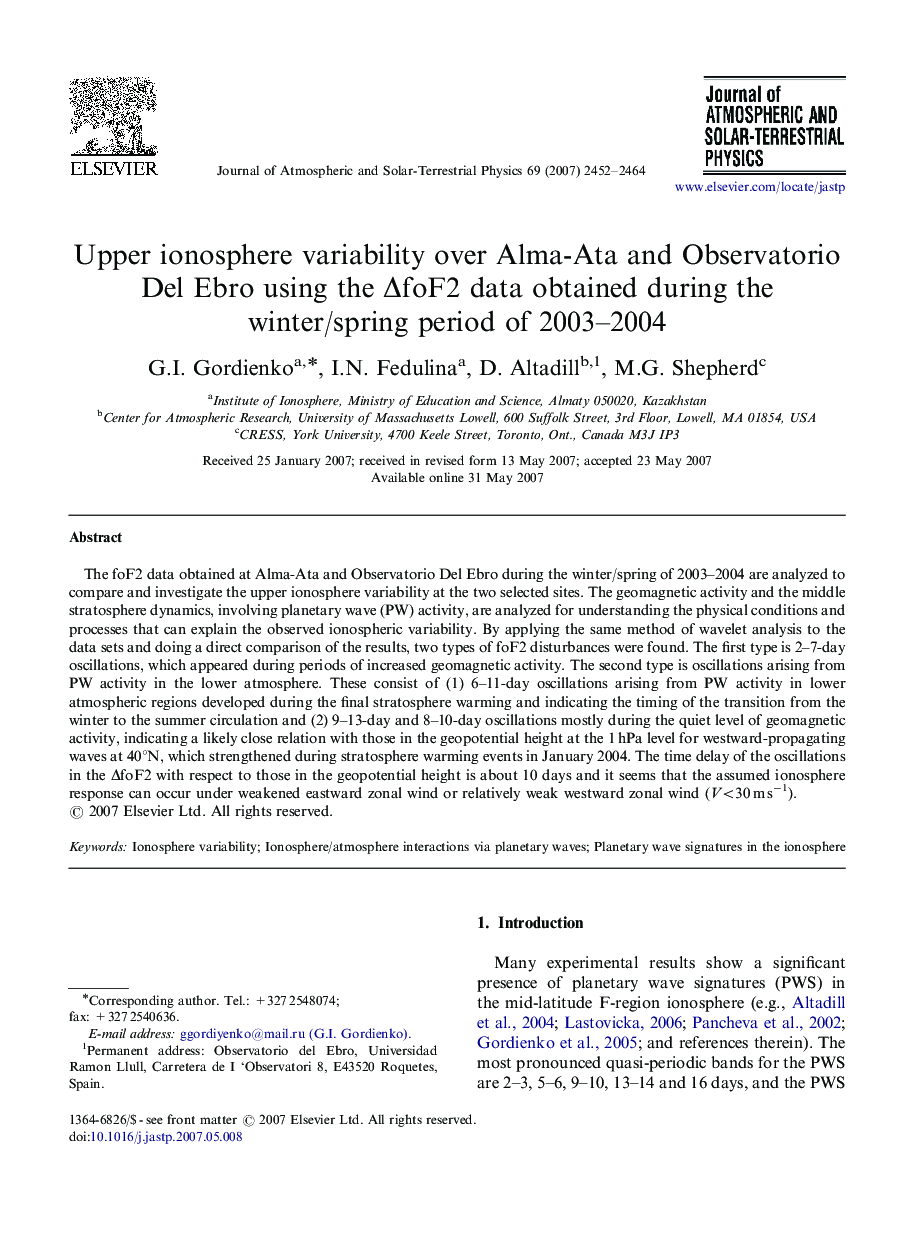| Article ID | Journal | Published Year | Pages | File Type |
|---|---|---|---|---|
| 1777926 | Journal of Atmospheric and Solar-Terrestrial Physics | 2007 | 13 Pages |
Abstract
The foF2 data obtained at Alma-Ata and Observatorio Del Ebro during the winter/spring of 2003-2004 are analyzed to compare and investigate the upper ionosphere variability at the two selected sites. The geomagnetic activity and the middle stratosphere dynamics, involving planetary wave (PW) activity, are analyzed for understanding the physical conditions and processes that can explain the observed ionospheric variability. By applying the same method of wavelet analysis to the data sets and doing a direct comparison of the results, two types of foF2 disturbances were found. The first type is 2-7-day oscillations, which appeared during periods of increased geomagnetic activity. The second type is oscillations arising from PW activity in the lower atmosphere. These consist of (1) 6-11-day oscillations arising from PW activity in lower atmospheric regions developed during the final stratosphere warming and indicating the timing of the transition from the winter to the summer circulation and (2) 9-13-day and 8-10-day oscillations mostly during the quiet level of geomagnetic activity, indicating a likely close relation with those in the geopotential height at the 1 hPa level for westward-propagating waves at 40°N, which strengthened during stratosphere warming events in January 2004. The time delay of the oscillations in the ÎfoF2 with respect to those in the geopotential height is about 10 days and it seems that the assumed ionosphere response can occur under weakened eastward zonal wind or relatively weak westward zonal wind (V<30 m sâ1).
Keywords
Related Topics
Physical Sciences and Engineering
Earth and Planetary Sciences
Geophysics
Authors
G.I. Gordienko, I.N. Fedulina, D. Altadill, M.G. Shepherd,
